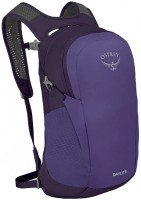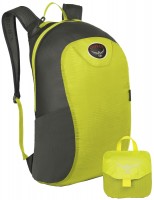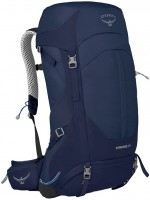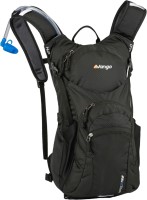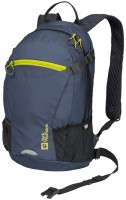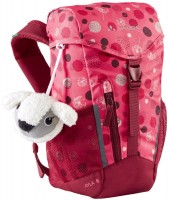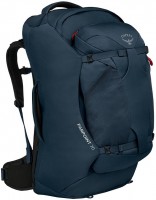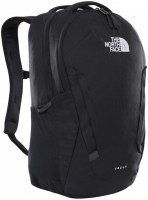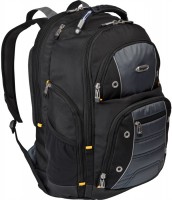Backpacks Wenger
All Backpacks Advanced filters → |
You might be interested in
Articles, reviews, useful tips
All materials
5 versatile backpacks for safe laptop transportation
Reliable and ergonomic laptop backpacks with good internal space organization

TOP 5 urban backpacks with theft-protection
Urban backpacks to protect your belongings from theft

Protect your laptop: choosing the best transportation method
We study all the nuances of transporting laptop and select accessories that will provide it with reliable protection

TOP 5 tactical backpacks
Excellent backpacks for military, paramedics, hunters, fishermen, etc.

What to give a boyfriend?
Optimal and universal gifts for a boyfriend depending on his hobbies and desires

What should a good urban backpack have?
Choosing an urban backpack: the main features of a cool model
Backpacks: specifications, types
By features
The application for which the backpack was originally designed.
Of course, this parameter is only a general recommendation, and not a strict rule: for example, if you wish, you can use a tactical or sports backpack as a city backpack, a hiking backpack as a hunting backpack, etc. At the same time, most of them are also suitable as a backpack for hand luggage, not to mention backpacks for tourism (cabin).... However, specialization determines not only the capacity and other basic characteristics, but also the specific design features of the equipment; so it is best to choose the product that best suits the intended application. Moreover, some models initially allow several destinations — for example, there are backpacks that are positioned both as sports and as “ for outdoor activities ”.
Specific uses may be as follows:
— Urban. Distinctive features of urban backpacks are a relatively small volume (up to 40 liters, with rare exceptions), as well as a discreet style and a minimum number of additional pockets. In addition, "purely urban" backpacks usually do not have a drinking system outlet (see "Design"), although this function can be found in models of a combined purpose (for example, urban / sports). Anyway, products of this type, in accordance with the name, are designed mainly for everyday movement around the city; in addition, they can come in handy on a relatively short trip with a small amount of things.
— Leisure. Backpacks designed for lovers of an active lifestyle; in fact — a cross between the tourist and sports described below. The volume of such a backpack is at least 10 liters and can reach 80 liters or even more; however, in general, "active" models are more compact and less spacious than tourist ones. Another distinguishing feature is the abundance of pockets and fasteners (of course, a specific set of such equipment should be specified separately). Thanks to all this, such products are well suited for long-distance hiking, for cycling, and for traveling by transport. And many of them can also be used as urban backpacks. So if among urban models there was no suitable option, you can try to look for it among backpacks for outdoor activities.
— Sports. Backpacks designed for use directly during sports. Some of these products are initially positioned as equipment for a specific sport — for example, running. One of the main features of sports models is the elongated, streamlined shape, which provides maximum mobility and optimal weight distribution, as well as reduces air resistance during fast movement. Another mandatory feature is the introduction of a drinking system that allows you to drink on the go (for more details, see "Design") In addition, the volume of sports backpacks is very small — up to 15 liters; models larger than 15 liters usually have a combined purpose, such as "active recreation / sports". And some products of this type are generally intended only for drinking systems and have a volume of only 1.5 – 2 liters.
— Hiking. The term "trekking" is also used. The main purpose of this type of backpacks are long trips over rough terrain. Such products have a design designed for convenience during long-term carrying, and an abundance of additional pockets (see below) for easy distribution of things. In addition, many tourist backpacks have an increased degree of protection against moisture and other adverse climatic factors. The volume can be different, from 10 – 12 liters in children's products to 120 – 140 liters in expeditionary models.
For tourism (cabin). Backpacks for travelers in the cabin size form factor, most often fitting into the allowed dimensions of hand luggage for carrying on board aircraft. They are usually used in addition to a large suitcase or instead of it (if there are not so many things). Travel backpacks usually have a large main compartment with a 180° opening, a laptop compartment, often equipped with a side handle, a suitcase attachment and, in some cases, a combination lock.
— Tactical and hunting/fishing. A category that actually combines two types of backpacks: actually tactical models designed for war games or even real combat operations, and products for a more "peaceful" purpose, designed for hunting and fishing. Both species have common features, which made it possible to combine them into one type: firstly, discreet dark coloring, often with a camouflage pattern; secondly, the abundance of additional pockets, clips, fasteners and other accessories. And you can distinguish one variety from another by the following points. So, if the product provides for the MOLLE \ PALS system (see "Design") — we have a clearly tactical model. In addition, tactical backpacks use military-style camouflage — "woodland", "desert", "flecktarn", "pixel", etc.; and in hunting camouflage, the main elements of the pattern are leaves, blades of grass and twigs. It is also worth mentioning that there are highly specialized models — for example, purely fishing ones, with special compartments for gear and even built-in folding chairs for the convenience of sitting on the shore. Summing up, we note that before buying a model from this category, it's ok to clarify its specific specialization.
— Bicycle bag. Specialized backpacks designed for cycling. Colloquially, they are called "cycling pants": the lower part of the backpack is divided into two halves, resembling trouser legs, and when used, the bike bag is attached to the boot of a bicycle so that these halves hang down on both sides of the rear wheel. "Pants" can be made folding, when they are folded, the product turns into an ordinary city bag or backpack. However, most bike bags are specifically designed to be carried on a bike rack and have no other uses.
Of course, this parameter is only a general recommendation, and not a strict rule: for example, if you wish, you can use a tactical or sports backpack as a city backpack, a hiking backpack as a hunting backpack, etc. At the same time, most of them are also suitable as a backpack for hand luggage, not to mention backpacks for tourism (cabin).... However, specialization determines not only the capacity and other basic characteristics, but also the specific design features of the equipment; so it is best to choose the product that best suits the intended application. Moreover, some models initially allow several destinations — for example, there are backpacks that are positioned both as sports and as “ for outdoor activities ”.
Specific uses may be as follows:
— Urban. Distinctive features of urban backpacks are a relatively small volume (up to 40 liters, with rare exceptions), as well as a discreet style and a minimum number of additional pockets. In addition, "purely urban" backpacks usually do not have a drinking system outlet (see "Design"), although this function can be found in models of a combined purpose (for example, urban / sports). Anyway, products of this type, in accordance with the name, are designed mainly for everyday movement around the city; in addition, they can come in handy on a relatively short trip with a small amount of things.
— Leisure. Backpacks designed for lovers of an active lifestyle; in fact — a cross between the tourist and sports described below. The volume of such a backpack is at least 10 liters and can reach 80 liters or even more; however, in general, "active" models are more compact and less spacious than tourist ones. Another distinguishing feature is the abundance of pockets and fasteners (of course, a specific set of such equipment should be specified separately). Thanks to all this, such products are well suited for long-distance hiking, for cycling, and for traveling by transport. And many of them can also be used as urban backpacks. So if among urban models there was no suitable option, you can try to look for it among backpacks for outdoor activities.
— Sports. Backpacks designed for use directly during sports. Some of these products are initially positioned as equipment for a specific sport — for example, running. One of the main features of sports models is the elongated, streamlined shape, which provides maximum mobility and optimal weight distribution, as well as reduces air resistance during fast movement. Another mandatory feature is the introduction of a drinking system that allows you to drink on the go (for more details, see "Design") In addition, the volume of sports backpacks is very small — up to 15 liters; models larger than 15 liters usually have a combined purpose, such as "active recreation / sports". And some products of this type are generally intended only for drinking systems and have a volume of only 1.5 – 2 liters.
— Hiking. The term "trekking" is also used. The main purpose of this type of backpacks are long trips over rough terrain. Such products have a design designed for convenience during long-term carrying, and an abundance of additional pockets (see below) for easy distribution of things. In addition, many tourist backpacks have an increased degree of protection against moisture and other adverse climatic factors. The volume can be different, from 10 – 12 liters in children's products to 120 – 140 liters in expeditionary models.
For tourism (cabin). Backpacks for travelers in the cabin size form factor, most often fitting into the allowed dimensions of hand luggage for carrying on board aircraft. They are usually used in addition to a large suitcase or instead of it (if there are not so many things). Travel backpacks usually have a large main compartment with a 180° opening, a laptop compartment, often equipped with a side handle, a suitcase attachment and, in some cases, a combination lock.
— Tactical and hunting/fishing. A category that actually combines two types of backpacks: actually tactical models designed for war games or even real combat operations, and products for a more "peaceful" purpose, designed for hunting and fishing. Both species have common features, which made it possible to combine them into one type: firstly, discreet dark coloring, often with a camouflage pattern; secondly, the abundance of additional pockets, clips, fasteners and other accessories. And you can distinguish one variety from another by the following points. So, if the product provides for the MOLLE \ PALS system (see "Design") — we have a clearly tactical model. In addition, tactical backpacks use military-style camouflage — "woodland", "desert", "flecktarn", "pixel", etc.; and in hunting camouflage, the main elements of the pattern are leaves, blades of grass and twigs. It is also worth mentioning that there are highly specialized models — for example, purely fishing ones, with special compartments for gear and even built-in folding chairs for the convenience of sitting on the shore. Summing up, we note that before buying a model from this category, it's ok to clarify its specific specialization.
— Bicycle bag. Specialized backpacks designed for cycling. Colloquially, they are called "cycling pants": the lower part of the backpack is divided into two halves, resembling trouser legs, and when used, the bike bag is attached to the boot of a bicycle so that these halves hang down on both sides of the rear wheel. "Pants" can be made folding, when they are folded, the product turns into an ordinary city bag or backpack. However, most bike bags are specifically designed to be carried on a bike rack and have no other uses.
Main function
— Universal. The term " unisex " is also used. These backpacks are suitable for most adults, regardless of gender.
— For women. Specific models created taking into account the differences between the female physique and the male one — first of all, this concerns the shape of the back and the location of additional ties (see "Design"). In addition, women's backpacks can have a distinctive design.
— For children. Children's backpacks by default are not designed to carry a large amount of weights, respectively, they have a small volume — usually less than 20 liters, with rare exceptions in the form of teenage models. In addition, various backpacks are designed for children of different ages and sizes, and can have an appropriate bright design. In models for this purpose (especially urban ones), reflective stripes are often provided, as well as a special pocket or patch for indicating the contact details of the parents.
— For women. Specific models created taking into account the differences between the female physique and the male one — first of all, this concerns the shape of the back and the location of additional ties (see "Design"). In addition, women's backpacks can have a distinctive design.
— For children. Children's backpacks by default are not designed to carry a large amount of weights, respectively, they have a small volume — usually less than 20 liters, with rare exceptions in the form of teenage models. In addition, various backpacks are designed for children of different ages and sizes, and can have an appropriate bright design. In models for this purpose (especially urban ones), reflective stripes are often provided, as well as a special pocket or patch for indicating the contact details of the parents.
Total capacity
The working volume of a backpack determines the maximum amount of cargo that can be carried in it. Note that not all manufacturers indicate this parameter in the same way: in one case it can only be the volume of the main compartment, in the other — the total capacity, taking into account all compartments and pockets. If the exact value is important for you, you should separately specify this parameter for each model of interest.
The optimal volume of a backpack is directly related t...o its intended purpose and features of use. For example, for an urban model designed for documents and textbooks, most often 10 liters is enough, and for trips lasting several days, about 60-70 liters, or even more, may be needed. In general, when choosing the optimal volume for a hiking backpack, it is best to turn to reference literature, or for advice from experienced “hikers”.
Note that the volume of the backpack can often be adjusted. One of the options is side ties (see "Design") to change the thickness. And in some versions, it may also be possible to change the volume due to a special folding insert made of fabric — if necessary, it can be expanded and the height of the backpack can be increased. The names of such models often contain two numbers, for example 35:45 — they indicate the volume in the folded and unfolded form, respectively. In our catalog for these options, the maximum volume is indicated, in the unfolded position.
The optimal volume of a backpack is directly related t...o its intended purpose and features of use. For example, for an urban model designed for documents and textbooks, most often 10 liters is enough, and for trips lasting several days, about 60-70 liters, or even more, may be needed. In general, when choosing the optimal volume for a hiking backpack, it is best to turn to reference literature, or for advice from experienced “hikers”.
Note that the volume of the backpack can often be adjusted. One of the options is side ties (see "Design") to change the thickness. And in some versions, it may also be possible to change the volume due to a special folding insert made of fabric — if necessary, it can be expanded and the height of the backpack can be increased. The names of such models often contain two numbers, for example 35:45 — they indicate the volume in the folded and unfolded form, respectively. In our catalog for these options, the maximum volume is indicated, in the unfolded position.
Removable backpack
The presence of an additional removable accessory in the design of the backpack. It can be either another backpack of a small volume, or a bag or other product of a similar purpose. Anyway, such equipment provides additional features, the specific set of which depends on the way the backpack is used. For example, when traveling by plane, the main backpack can be checked in as luggage, and “essential items” can be folded into a removable backpack and taken with yo...u as hand luggage. And on a multi-day military-tactical game like airsoft or laser tag, a large backpack is useful for transporting things to the training ground and back, and in a small one you can always carry food, water, first aid kit, etc. with you.
Backrest
— Anatomical. The most common type of back in today's backpacks. In accordance with the name, the shape and design of such a backrest is designed taking into account the anatomy of the human body; thanks to this, the load is optimally distributed on the user's back, which allows you to carry significant weight without much inconvenience and harm to health (of course, if the backpack is properly selected and configured). The specific features of such backpacks can...be different, but most often the back has protrusions and curves, which give it the necessary properties.
— Easel. This type of backrest is a one-piece structure in the form of a frame with straps (usually metal), on which the actual soft bag for things is attached. Easel backs are less comfortable than anatomical ones, so they are relatively rare, mainly in two categories of backpacks. The first is hiking models (see "In the direction") of large capacity, from 60 liters and above; in them, the soft bag is often made removable, which allows, if necessary, to hang another load on the frame that is suitable in size and weight. The second variety is backpacks for fishermen, where the frame is actually a folding chair (see "Equipment").
— Hard back. The presence of a rigid frame in the design of the backpack. Note that this feature should not be confused with the easel back: a rigid frame usually means one or more metal plates built into the anatomical back. The main function of such plates is to optimize the load when the backpack is unevenly filled or when carrying hard objects of an “uncomfortable” shape. Without hard inserts, the contents of the backpack could press on certain points of the back, creating discomfort, and the plates evenly distribute all the pressure on the back. At the same time, in many models it is possible to remove the frame — for example, to reduce the weight of the backpack.
— Back ventilation. This feature suggests that the back has a special design that improves air circulation between the backpack and the user's back. This, in turn, improves thermoregulation and reduces sweating. Such properties are usually achieved through the use of porous breathable materials, as well as a special relief shape of the back itself. Note that this feature will be useful not only in hot, but also in cool weather.
— Adjustment of a back on height. The ability to adjust the back of the backpack in height is found only in models equipped with a waist belt (see "Cables and belts"). The essence of this adjustment is that, thanks to a special fastening, the main straps can be moved up or down, changing the distance between these straps and the waist belt. This gives additional features for adjusting the backpack to the height and physique of a particular user.
— Easel. This type of backrest is a one-piece structure in the form of a frame with straps (usually metal), on which the actual soft bag for things is attached. Easel backs are less comfortable than anatomical ones, so they are relatively rare, mainly in two categories of backpacks. The first is hiking models (see "In the direction") of large capacity, from 60 liters and above; in them, the soft bag is often made removable, which allows, if necessary, to hang another load on the frame that is suitable in size and weight. The second variety is backpacks for fishermen, where the frame is actually a folding chair (see "Equipment").
— Hard back. The presence of a rigid frame in the design of the backpack. Note that this feature should not be confused with the easel back: a rigid frame usually means one or more metal plates built into the anatomical back. The main function of such plates is to optimize the load when the backpack is unevenly filled or when carrying hard objects of an “uncomfortable” shape. Without hard inserts, the contents of the backpack could press on certain points of the back, creating discomfort, and the plates evenly distribute all the pressure on the back. At the same time, in many models it is possible to remove the frame — for example, to reduce the weight of the backpack.
— Back ventilation. This feature suggests that the back has a special design that improves air circulation between the backpack and the user's back. This, in turn, improves thermoregulation and reduces sweating. Such properties are usually achieved through the use of porous breathable materials, as well as a special relief shape of the back itself. Note that this feature will be useful not only in hot, but also in cool weather.
— Adjustment of a back on height. The ability to adjust the back of the backpack in height is found only in models equipped with a waist belt (see "Cables and belts"). The essence of this adjustment is that, thanks to a special fastening, the main straps can be moved up or down, changing the distance between these straps and the waist belt. This gives additional features for adjusting the backpack to the height and physique of a particular user.
Ties and straps
— Chest strap. Attachment in the form of a strap with a clasp that connects the main straps of the backpack at the level of the user's chest. When fastened, such a strap keeps the straps at the same distance from each other and does not allow them to “scatter”. This provides additional convenience in the distribution of weight, as well as a secure fit on the body: it is almost impossible to remove the backpack without unfastening the strap. To adjust to a specific...user, the chest strap is often made adjustable.
— Adjustment of the chest strap. The ability to adjust the height at which the chest strap of the backpack is located. This function allows you to choose the optimal location of the screed, taking into account the height and physique of the user; while the range of adjustment is usually quite extensive. However in some models (especially inexpensive ones), adjustable ties can spontaneously move when accidentally touched, knocking down the height settings; however, this shortcoming is usually not critical.
— Top straps. Tie-down straps located at the top of the backpack. They are mainly intended for fixing the upper valve, as well as for adjusting the volume of the upper part of the backpack, similarly to the side straps described below (moreover, such adjustment can also be provided in models that do not have a valve).
— Side straps. Tie straps located on the sides of the backpack — usually one on each side, however, in large tall models, there may be two on the side. The main function of such straps is to “compact” the backpack if it is not completely filled: by tightening the side ties, you can reduce the thickness of the backpack so that the contents are tightly fixed and not dangling inside. In addition, the side tie is convenient to use in combination with the bottle pocket for carrying long items, such as an umbrella or a mat: the lower part of such an item fits into the pocket, and the upper part can be fixed with a tie.
— Front straps. If the purpose of the ties described above is primarily to adjust the volume, then in the case of front ties they can be described as an additional fastening for placing things. They are two horizontal "belts" at the top and bottom of the backpack, under which you can fasten outerwear (similar to the principle with an elastic cord), a mat or other voluminous things, such as a snowboard. However, for the latter, these ties are not specialized and storage of the board in them is less convenient than in personal mounts. Naturally, the screed also fulfills its main function — it tightens the walls of the backpack, making its shape more “slender” and compact.
— Bottom straps. Tie-down straps located on the underside of the product. They allow you to adjust the volume of the lower part of the backpack (or the lower pocket), provide additional support and fixation of the contents, and in some models they can also be used as a fastener for carrying various items “on an external sling”: for example, you can put ties into stretched to the maximum size karemat and tighten the straps, securely securing the outer load.
— Waist belt. An additional device in the form of a belt, which, when fastened, covers the user's body in the area of the belt. The specific design of this part may vary. So, in relatively small backpacks, it is just a strap made of nylon or other similar material, and in large volumetric models, two wide and thick “petals” are provided that are adjacent to the user’s sides and are interconnected by a small strap with a clasp. Anyway, the main function of the waist belt is to redistribute the load: it allows you to transfer the load from the shoulders to the pelvic area, which is especially convenient when carrying heavy loads. In addition, such a device provides additional reliability of fixing the backpack on the body.
— Adjustment of the chest strap. The ability to adjust the height at which the chest strap of the backpack is located. This function allows you to choose the optimal location of the screed, taking into account the height and physique of the user; while the range of adjustment is usually quite extensive. However in some models (especially inexpensive ones), adjustable ties can spontaneously move when accidentally touched, knocking down the height settings; however, this shortcoming is usually not critical.
— Top straps. Tie-down straps located at the top of the backpack. They are mainly intended for fixing the upper valve, as well as for adjusting the volume of the upper part of the backpack, similarly to the side straps described below (moreover, such adjustment can also be provided in models that do not have a valve).
— Side straps. Tie straps located on the sides of the backpack — usually one on each side, however, in large tall models, there may be two on the side. The main function of such straps is to “compact” the backpack if it is not completely filled: by tightening the side ties, you can reduce the thickness of the backpack so that the contents are tightly fixed and not dangling inside. In addition, the side tie is convenient to use in combination with the bottle pocket for carrying long items, such as an umbrella or a mat: the lower part of such an item fits into the pocket, and the upper part can be fixed with a tie.
— Front straps. If the purpose of the ties described above is primarily to adjust the volume, then in the case of front ties they can be described as an additional fastening for placing things. They are two horizontal "belts" at the top and bottom of the backpack, under which you can fasten outerwear (similar to the principle with an elastic cord), a mat or other voluminous things, such as a snowboard. However, for the latter, these ties are not specialized and storage of the board in them is less convenient than in personal mounts. Naturally, the screed also fulfills its main function — it tightens the walls of the backpack, making its shape more “slender” and compact.
— Bottom straps. Tie-down straps located on the underside of the product. They allow you to adjust the volume of the lower part of the backpack (or the lower pocket), provide additional support and fixation of the contents, and in some models they can also be used as a fastener for carrying various items “on an external sling”: for example, you can put ties into stretched to the maximum size karemat and tighten the straps, securely securing the outer load.
— Waist belt. An additional device in the form of a belt, which, when fastened, covers the user's body in the area of the belt. The specific design of this part may vary. So, in relatively small backpacks, it is just a strap made of nylon or other similar material, and in large volumetric models, two wide and thick “petals” are provided that are adjacent to the user’s sides and are interconnected by a small strap with a clasp. Anyway, the main function of the waist belt is to redistribute the load: it allows you to transfer the load from the shoulders to the pelvic area, which is especially convenient when carrying heavy loads. In addition, such a device provides additional reliability of fixing the backpack on the body.

